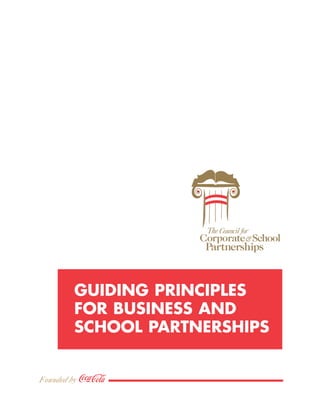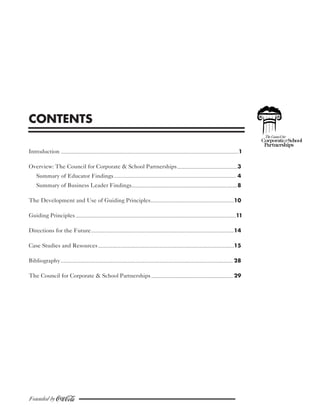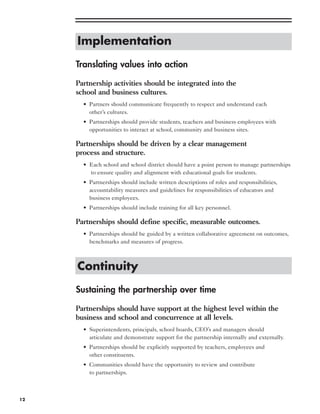The document provides guiding principles for business and school partnerships. It discusses findings from interviews with educators and business leaders about current partnerships. The key findings are that 70% of school districts now have business partnerships, contributing an estimated $2.4 billion and 109 million volunteer hours to schools. Partnerships are growing in both number and scope, with the number of districts with partnerships increasing 35% since 1990.
































